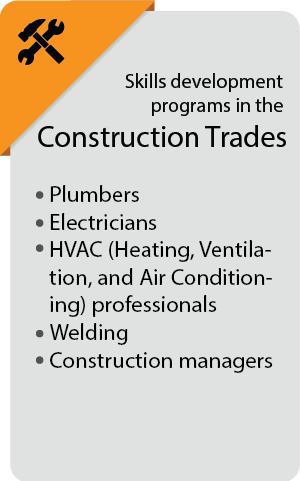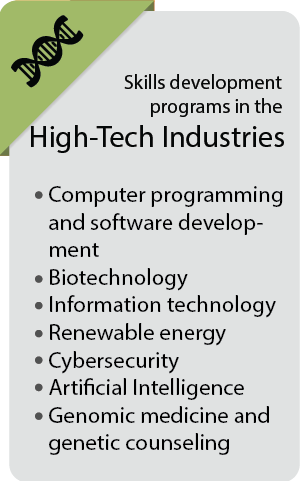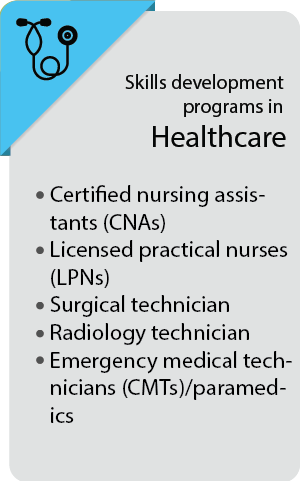Since the congressional Short-Term Pell debate centers on finding the right balance between quality and access, so does our consideration of specific legislative provisions currently being debated. Below we review five different approaches to assuring adequate levels of quality. The preferences among Workforce Pell supporters range from using modest versions of one or two of these approaches to the robust use of all five.
While everyone wants Pell Grants to support quality programs that successfully place students in higher paying jobs, more quality requirements may make workforce development less accessible in four possible ways:
- Fewer programs may qualify—Fewer qualifying is by design. The purpose of the quality provisions is to ensure that low–quality programs aren’t supported by Short-Term Pell.
- Fewer programs may apply—To become eligible for Pell Grants, workforce development program administrators must apply and demonstrate they meet each quality standard Congress requires. Many programs are already stretched for resources. The more cumbersome the process, the fewer programs may apply. Even if they do successfully apply, some may find the ongoing work of maintaining eligibility sufficiently burdensome that they forgo their eligibility.
- Programs may accept fewer of the students who need it most—Many of the students who would benefit most from workforce education are also the most difficult to support and successfully place in higher paying jobs. If the quality standards are too high, it may create incentives for programs not to accept these more challenging students.
- May increase tuition and fees—The administrative costs of documenting fulfillment of quality requirements may also be passed along to students in the form of higher tuition and fees.
As you review the five approaches to quality assurance described below, consider whether each requirement, alone or in combination with the others, strikes the right balance with accessibility.
1. Excluding For-Profits
One means by which the first bill introduced in Congress aims to make certain Pell eligible programs are high quality is to make all for-profit educational institutions who offer workforce development courses ineligible. That first bill is the Senate’s Jumpstart Our Businesses by Supporting Students (JOBS) Act, versions of which were first introduced several years ago. The two other major Short-Term Pell bills were both introduced in the House. Each House bill would make for-profits eligible for Pell Grants if they, and all other career development programs, meet other quality requirements discussed below. The first House Short-Term Pell bill is called the Promoting Employment and Lifelong Learning (PELL) Act. The second one is the Jobs to Complete Act.
Many believe Short-Term Pell legislation would have already passed were it not for the question of how to treat for-profit institutions. For-profit four-year programs can be more accessible than traditional four-year public colleges or private non-profit colleges because they often have lower academic requirements for admittance and have more flexible schedules for working students. However, for-profit four-year college programs have had significant quality problems. The for-profit quality concerns are even greater for skills education courses.
Case For
Supporters of prohibiting for-profit institutions from Workforce Pell eligibility argue there are higher quality concerns with these institutions for a good reason. They simply point to the considerable track record of poor for-profit performance. Many have preyed upon their students, particularly lower income and minority students, with well-documented records of low program quality along with low graduation and job placement rates. Many for-profits have also frequently engaged in deceptive practices that mislead students on each of those points.
As noted above, the Urban Institute’s review of existing studies and data confirmed the poorer performance of for-profits. Another study proponents of excluding for-profits cite was published in the Journal of Human Resources. It found certificate seeking students at for-profit institutions are 1.5% less likely to be employed and have 11% lower earnings if they complete the program than students in similar programs at public institutions like community colleges. This study also found the students enrolled in for-profit colleges earn less pre-enrollment than the median public institution student. Additionally, the median cost of tuition at for-profit institutions was found to be significantly higher compared to public ones. The modest gains in earnings among for-profit certificate students, according to the study, were often not enough to justify the debt they incurred to enroll. While graduation rates at for-profits are higher, for-profit’s opponents say the impacts on students after graduation confirm they do not provide the benefits public certificate-granting institutions do.
Economic choice between For-profit and Public Institutions
Supporters of the for-profit exclusion also argue the accessibility advantages for-profits claim over public and private non-profit colleges in the world of four-year college degrees don’t hold when it comes to shorter CCL programs. The public institutions that are by far the most active in career development are community colleges. An estimated 3.7 million community college students are enrolled in non-academic-credit programs. Supporters argue community colleges are generally as easy to get into and provide schedules that are as feasible for part- and full-time workers as for-profit programs. Supporters of the for-profit exclusion further argue community colleges are both much less expensive, as the Journal of Human Resources study found, and have a better track record for quality.
Proponents also argue we can’t rely on the other quality requirements discussed below to screen out the poor performing for-profits. They argue that, with a profit motive driving them, these organizations have proven to be too agile and creative in getting around such provisions in the past.
Some proponents of the for-profit exclusion agree it may make sense at some point to make them eligible if they can meet other quality assurance measures. Still, supporters argue it’s smarter to start Short-Term Pell with the institutions like community colleges with the best track record. They suggest it may then make sense to experiment with including for profits once experience is gained with the other quality requirements established.
Case Against
Opponents argue simply excluding all for-profits, including those with better track records, is counter-productive and unfair. They argue it’s better to protect against poor quality by establishing the quality requirements discussed below that all programs—for-profits and community colleges alike—must meet. Opponents reason that, if a for-profit career development program can meet the same quality criteria a community college can meet, then the interests of both quality and access are served.
Opponents also suggest the evidence does not consistently confirm community colleges are superior in all respects to for-profits. For example, they observe that the U.S. Department of Education documents a substantially higher graduation rate for students enrolled in shorter certificate and/or two-year associate degree programs at for-profit institutions (61%) than at community colleges (29%).






